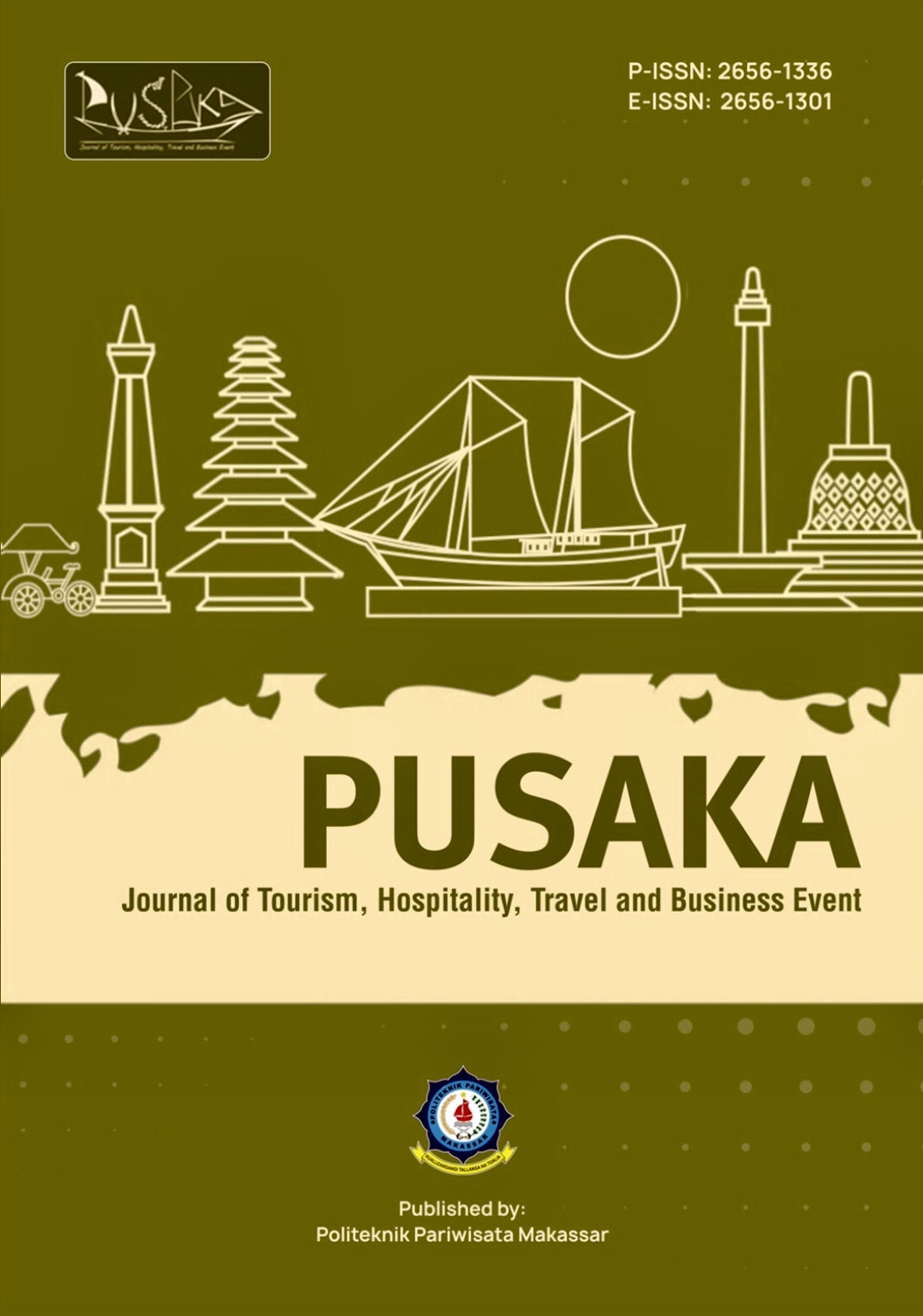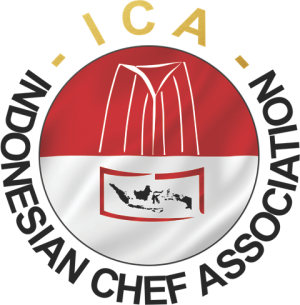Perkembangan Wisata Alam Bantimurung Dalam Prespektif Sejarah dan Budaya
DOI:
https://doi.org/10.33649/pusaka.v3i1.68Keywords:
Historical Tourism, Bantimurung Nature Tourism, MarosAbstract
This study aims to determine the background of Bantimurung including the Bantimurung-Bulusaraung National Park, the development of Bantimurung as a tourist attraction and the impact of the presence of the Bantimurung Nature Tourism Area in 2000-2018. This research is a historical research with a historical methodology that has stages namely, heuristics (data collection), criticism (verification), interpretation (interpretation) and historiography (history writing). The results of this study indicate that the background of Bantimurung enters the Bantimurung-Bulusaraung National Park, because Bantimurung is a natural area with beautiful scenery that must be protected. Development of the Bantimurung Nature Tourism Area continues to experience development and continue to explore what is in this area including the objects in it. Various efforts have been made by the Department of Tourism both in developing infrastructure and detailed administrative arrangements. The presence of this tourist attraction is as a forum for the community around Maros Regency to support the economy, a place for students to research and become a place of recreation for all people.
References
Abd Kadir, W., Nurhaedah, M., & Purwanti, R. (2013). Konflik pada kawasan taman nasional Bantimurung Bulusaraung Provinsi Sulawesi Selatan dan upaya penyelesaiannya. Jurnal Penelitian Sosial Dan Ekonomi Kehutanan, 10(3), 29170.
Agus, A., & Ridwan, M. (2019). Pemetaan Objek Wisata Alam Kabupaten Kepulauan Selayar Berbasis Sistem Informasi Geografis Arcgis 10.5. PUSAKA (Journal of Tourism, Hospitality, Travel and Business Event), 1(1), 45–50.
Aini, W., Ridwan, M., & Emrizal, E. (2019). Perencanaan
Paket Wisata Sejarah Lembah Bakkara Kecamatan
Baktiraja Kabupaten Humbang Hasundutan
Sumatera Utara. Pusaka (Journal of Tourism,
Hospitality, Travel and Business Event), 1(2), 59–63.
Akhmaddhian, S. (2013). Peran pemerintah daerah dalam
mewujudkan hutan konservasi berdasarkan UndangUndang Nomor 41 Tahun 1999 tentang Kehutanan
(Studi di Kabupaten Kuningan). Jurnal Dinamika
Hukum, 13(3), 446–456.
Area, O. F. B.-B. N. T., & Area, I. N. M. P. K. (2018).
Valuasi Ekonomi Nilai Guna Langsung Kawasan
Wisata Alam Bantimurung-Bulusaraung di Kawasan
Karst Maros Pangkep (KKMP). Jurnal Ekonomika
Volume IX No.
Babul, B. T. N. (2008). Rencana Pengelolaan Jangka
Panjang Taman Nasional Bantimurung Bulusaraung
Periode 2008-2027 Kabupaten Maros dan Pangkep
Provinsi Sulawesi Selatan. Maros: Kantor Balai
Taman Na Sional Bantimurung Bulusaraung.
Brumm, A., Shagir, K. J., Ismail, T., Hakim, B., Perston,
Y., Newman, K., & Macknight, C. (2019). Retracing
Alfred Russel Wallace’s 1857 expedition to the
Maros karsts of Sulawesi. Biological Journal of the
Linnean Society, 126(4), 637–654.
Chaeril, C., Tjoneng, A., & Saida, S. (2018). Analisis
Kerawanan Longsor Berbasis Spasial di Kawasan
Taman Nasional Bantimurung Bulusaraung. Agrotek,
(1), 54–68.
Halim, L. F. (2016). Pengelolaan Dan Potensi Eko Wisata
di Taman Nasional Bantimurung Bulusaraung.
Agrika: Jurnal Ilmu-Ilmu Pertanian, 10(2).
Hamid, S. M. A. R. (2008). Pengantar Ilmu Sejarah.
Makassar: Rayhan Intermedia.
Indonesia, K. K. R. (2014). Peraturan Menteri Kehutanan
Republik Indonesia Nomor: P. 56/menhut-II/2014
tentang MMP dan Berita Negara Republik Indonesia
, 2016 KEMEN-LHK. MMP.
Isnan, W. (2016). Karakteristik dan preferensi pengunjung
wisata alam bantimurung. Buletin Eboni, 13(1), 69–
Kadir, A. W., Purwanto, R. H., & Poedjirahajoe, E.
(2013). Analisis Stakeholder Pengelolaan Taman
Nasional Bantimurung Bulusaraung, Propvinsi
Sulawesi Selatan (Stakeholder Analysis of
Bantimurung Bulusaraung National Park
Management, South Sulawesi Province). Jurnal
Manusia Dan Lingkungan, 20(1), 11–21.
MacKinnon, J., Phillipps, K., & van Balen, B. (1998). Seri
panduan lapangan burung-burung di Sumatera,
Jawa, Bali dan Kalimantan (termasuk Sabah,
Sarawak dan Brunei Darussalam). Bogor: Birdlife.
Mustari, A. H., Pramana, Y., & Nurlinda, R. (2013).
Keanekaragaman Kupu-kupu di Taman Nasional
Bantimurung Bulusaraung. Media Konservasi, 18(2).
Ngatimin, S. N. A., Nasruddin, A., Abdullah, T., &
Bulawan, J. A. (n.d.). Teknologi Perlindungan
Tanaman Palawija Secara Ramah Lingkungan.
Penerbit LeutikaPrio.
Ngatimin, S. N. A., Nasruddin, A., Gassa, A., & Abdullah,
T. (2019). Keanekaragaman Hayati Kupu-kupu
Berbasis Pelestarian Lingkungan di Taman Nasional
Bantimurung-Bulusaraung. BIOMA: JURNAL
BIOLOGI MAKASSAR, 4(2), 145–152.
Pembinaan, P., (Indonesia), P. B., Pendidikan, I. D.,
Kebudayaan, Pustaka, B., & PN. (1991). Kamus
Besar Bahasa Indonesia (Vol. 3658). Balai Pustaka.
Pristiyanto, D. (2005). Taman Nasional menurut Ditjen
PHKA. Dalam Http://Www. Ditjenphka. Go.
Id/Kawasan/Tn. Php.[Diakses Tanggal 8 Maret
.
Purwanto, R. H., & Poedjirahajoe, E. (2012). Peremajaan
Kemiri (Aleurites mollucana Wild.) PADA Kawasan
Taman Nasional Bantimurung Bulusaraung (Sebuah
Tinjauan Kebijakan Pemerintah). Jurnal Analisis
Kebijakan Kehutanan, 9(3), 176–189.
Putri, I. A. (2016). Pengaruh aktivitas pariwisata terhadap
keragaman jenis dan populasi kupu-kupu di taman
nasional bantimurung bulusaraung. Jurnal Penelitian
Hutan Dan Konservasi Alam, 13(2), 101–118.
Putri, I. A. (2017). Peran Sungai Pattunuang dalam
pengembangan ekowisata di obyek wisata alam
Pattunuang Assue, Taman Nasional Bantimurung
Bulusaraung. Lambung Mangkurat University Press.
Saragih, B., Sipayung, T., Saragih, J. R., & Dabukke, F.
B. M. (1998). Agribisnis: Paradigma baru
pembangunan ekonomi berbasis pertanian. Yayasan
Mulia Persada Indonesia Dan PT. Surveyor Indo.
SHAGIR, K. J., & IQBAL, M. (2012). White-eyed
Buzzard Butastur teesa, a new species for Greater
Sundas and Wallacea.
Siburian, R. (2010). Pengelolaan Taman Nasional
Bantimurung-Bulusaraung dan Dampaknya
Terhadap Masyarakat Lokal. Jurnal Masyarakat
Dan Budaya, 12(1), 119–144.
Sjamsuddin, H., & Nursam. (2007). Metodologi sejarah.
Ombak.
Downloads
Published
How to Cite
Issue
Section
License

This work is licensed under a Creative Commons Attribution-ShareAlike 4.0 International License.






















